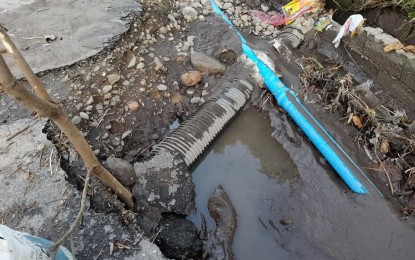
MOSQUITO BREEDING GROUNDS. Leaking water pipes and mud puddles are potential breeding grounds for the dengue carrier mosquito. Health authorities in Negros Oriental are anticipating possible early cases in 2024 with the onset of the El Niño phenomenon. (PNA file photo by Mary Judaline Flores Partlow)
DUMAGUETE CITY – The Provincial Health Office (PHO) of Negros Oriental is looking at the possible rise of dengue cases due to the El Niño phenomenon predicted to start this month with extreme weather conditions such as heavy rainfall and extreme dry spell.
PHO chief Dr. Liland Estacion said Wednesday the public should not let their guard down despite a decline in dengue cases in 2023 compared to the previous year.
Estacion said heavy rainfall would be conducive to more breeding places for the vector mosquitos carrying the deadly dengue virus.
There is no longer what they call “dengue season” which usually takes place mid-year onwards due to several factors such as climate change and a growing populace, the health official said.
Records at the PHO showed that Negros Oriental logged 1,503 dengue cases and five deaths in 2023, 35 percent lower than the 2022 recorded figure of 2,300 cases and 11 deaths.
The top ten cities and municipalities with the highest number of dengue cases last year were Dumaguete City (220 cases); La Libertad (164); Sibulan (116); Bindoy (98); Bais City (88); Siaton (88); Ayungon (76); Valencia (69); Tanjay City (65); and Manjuyod (64).
The deaths were posted from Ayungon, Valencia, Mabinay, Pamplona, and Sibulan. (PNA)
